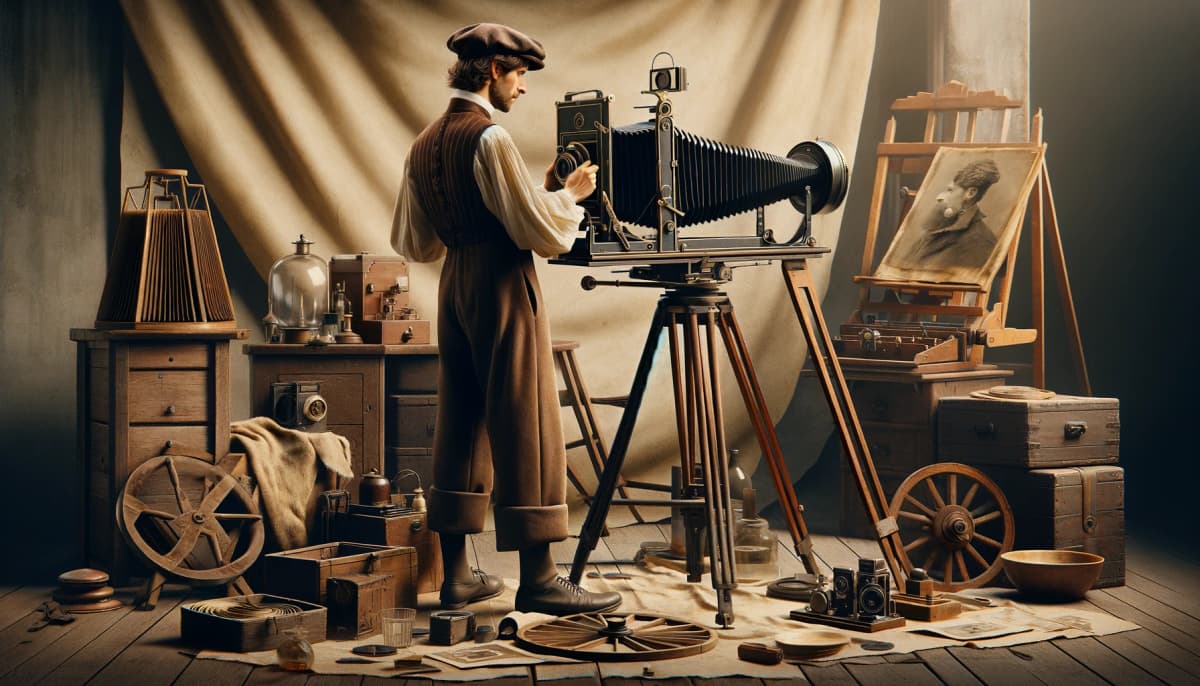Welcome on in! You're about to embark on an exciting journey as we explore the many common uses of silver, a metal as precious as its luster. Historically acclaimed for its captivating beauty and value, silver continues to charm us today with an astonishing array of applications. From breathtaking jewelry to powerful electrical components and from lifesaving medical applications to ground-breaking nanotechnology, silver's uses extend far and wide. But, are you ready to dive a bit deeper?
- Jewelry and Ornaments: Undoubtedly, the luster and elegance of silver can't be matched which makes it a timeless favorite in crafting exquisite jewelry and decorative items.
- Photography: Silver halide used in film photography? Ever heard of it? Keep on reading to learn more.
- Electronics: Silver's superior electrical conductivity plays an indispensable role in the designing of various electronic components. Can't credit everything to copper, can we?
- Medical Applications: Who knew silver had a humanitarian side too? From wound dressings to antibacterial applications, silver has loads to offer.
From the beauty of adornment to the brilliance of technology, silver threads its way through many aspects of our lives."
Curious enough? Continue reading to broaden your knowledge about silver’s role in solar energy production, water purification, finance and more. Let’s disrupt the silver lining cliché and uncover what really lies behind that gleaming shine!
Unveiling the Beauty of Silver in Jewelry and Ornaments
Step into a jewelry store, and silver will always catch your eye. Why? Simple - silver is rich, elegant, and unmistakably gorgeous. The versatility of this precious metal comes from its malleability and ductility, letting skilled jewelers create stunning pieces with complex designs.
Silverware catches attention for the same reasons. The reflection and beautiful shine of silver turn everyday utensils into luxury items that elevate any dinner table. It's more about creating art than simple, functional items.
The uses of silver don't end here. Mix it with a bit of copper, and you get sterling silver. The result is a harder, more durable compound as beautiful as pure silver. This alloy is a favorite among artists, who use it to create beautiful art and decorations. These pieces aren't just admired for their creativity, but as also symbols of class and refinement.

Diving into the World of Photography: Silver's Indispensable Role
Believe it or not, when you look at an old picture, you're actually looking at tiny particles of silver. That's right! For a long time, silver has been crucial to the traditional photography industry.
You might wonder how this works? It's all because of silver halides. They are sensitive to light and when they are on photographic film and come into contact with light, they form an image that can be developed into a picture. Think of it like a dance, where silver and light work together to capture special moments from our life.
But the rise of digital photography changed this. The demand for silver nitrate and silver halides saw a drop, decreasing around 70% by 2013. However, silver still has a fundamental role in digital camera sensors, proving its importance in photography.
Silver in Electronics: Conducting Our Modern World
Silver conducts electricity better than all other elements, which makes it pivotal in electronics for items like conductive pathways, switches, and fuses.
It's amazing how versatile silver is. It's not just about conductivity; its resistance to corrosion and strong heat conduction make it incredibly important in many electronic items. From small household gadgets to large industrial machines, they all rely on silver.
You might be asking, "Where is silver typically used?" Just look at the circuit board of any electronic item and you'll see the power of silver. Conductive inks, which are often found in printed circuit boards (PCBs) and various electronic parts, usually have silver in them. So, the smartphone or laptop you're reading this on? Silver is there, working behind the scenes.
In the industrial world, silver plays a key role, too. It's used in electrical switches, circuit breakers, and contacts - elements that rely heavily on this precious metal. The use of silver ensures these applications perform well and last a long time.
Miracle Metal: Silver's Crucial Role in Medical Applications
Silver is more than just a shiny metal, it's also a health hero. With its germ-fighting properties, silver helps our bodies heal and stay strong. Let's uncover how silver helps modern medicine.
Ever spotted a shiny material on your bandage or dressing? That's silver protecting you. It releases silver ions that fight off harmful bacteria and prevent infections. Unlike other germ fighters, silver lasts longer, offering you continuous protection.
People didn't randomly start using silver in medicine though; it has a long history tied to health. From ancient times, when people put silver coins in water containers to prevent disease, silver has always been used for its protective properties. Today, we use silver to coat surgical tools and other medical equipment, keeping them germ-free and safe for use.
But that's not all: silver's also a big deal in the pharmacy world. It's used in creams and ointments, particularly those made for burn wounds. For instance, silver sulfadiazine cream is commonly found in burn centers. It shields the burn area from bacterial infection, helping the body heal faster and better.

Stellar Shine: Silver's Importance in Solar Energy
Let's explore how silver is shaping our future. Its strong reflective properties are used in solar energy technologies. Essentially, silver catches and bounces back solar rays onto collectors, generating electricity. Sounds neat, right?
But it doesn't stop there. Silver also plays a critical role in storing this electricity. It's a big player in our shift towards greener energy sources. Its role in solar panels and batteries helps drive non-fossil energy production. This bolsters silver's importance in these industries.
So, why do we use silver? It's an excellent conductor of electricity, so it's an obvious choice for many electrical applications. It plays a massive role in green technologies, electric cars, 5G towers, and numerous electronic devices.
Safe and Pure: Silver's Contribution to Water Purification
Have you ever wondered what makes your drinking water safe? Well, it turns out that silver plays a significant role in water purification systems. This metal keeps filters clean and functioning well, by eliminating bacteria and algae. It's used in water supplies in various places, including community areas, pools, hospitals, and spas.
Silver ions - invisible to the naked eye - are the little superheroes of water purification. They oxidize and destroy microbes in your water, ensuring it's free from harmful microorganisms. Pretty impressive, right?
There's more. Silver is even effective when it cooperates with copper. Together, they provide a safer alternative to chlorine for sanitizing pools and tanks. This means no more irritated eyes or strong odors when you go for a swim.
But silver's antibacterial powers extend beyond water. It's a vital ingredient in personal hygiene products, clothing, and washing machines. These everyday items remain cleaner and safer thanks to silver's antimicrobial properties.
Currency and Wealth: Silver in the World of Finance
Have you ever considered silver as a form of wealth? Don't be surprised, it's more common than you might think. Trading shiny silver bars and beautifully embossed coins is not just an old-time pastime, it's a thriving modern asset whether you're an investor or collector. It's an age-old form of currency that continues to dazzle us with its value and versatility.
Imprinted with intricate designs and attention to detail, silver currency is not just about the monetary worth, it adds an aesthetic value too. Numismatics, or coin collecting, is a hobby that many enjoy. And why wouldn't they? Owning these small disks of wealth is not just gratifying, but also a testament to their cumulative historic and artistic significance.
But beyond coin collections, there's a broader financial picture. You know how people say - money runs the world? Well, silver plays a significant role in that. Until the 20th century, a large number of countries operated under a gold or silver standard. That simply means their currency was directly linked to a specific amount of silver or gold. So, for centuries, silver has been a cornerstone of the financial system. While silver-lined or backed currencies may not be prevalent today, the metal continues to influence the economy.
In the modern world of finances, silver retains its sparkle. Investment in silver, whether through intricate financial instruments or solid silver bullion, is one way to diversify a portfolio. Think of it as a hedge against inflation or a safety net during economic downturns. There's a reason people turn to precious metals during financial crisis - they hold their value. Pricing is usually determined by several major international banks, keeping an eye on market trends is therefore vital for those interested in investing.
Silver in Space: Understanding Its Unique Role in Aerospace
Let's take a detour in our journey through the uses of silver to discover its impressive role in the aerospace industry. Believe it or not, silver isn't just for jewelry – it's also a key player in space exploration, making a big difference in crucial spacecraft components.
Picture this. Spacecraft coatings and high-temperature alloys face incredibly tough conditions – extreme heat and hostility, the kind that isn't friendly to most materials. But silver? It’s up to the challenge. Its rugged toughness lets it stand strong, even in the most intense situations.
Next, think about the electrical components in spacecraft. They face a lot of stress and need to be sturdy, trustworthy, and super conductive. And silver delivers in all these fronts. Its ability to conduct electricity is unmatched, making it a go-to choice for critical space technology to ensure smooth operations when it counts the most.
Treading the Path of Innovation: Nanotechnology and Silver
When you hear the word 'silver', you probably think of jewelry or coins. But did you know this precious metal is also used in high-tech research? Yes, silver plays an important role in nanotechnology.
Silver nanoparticles - tiny structures about a thousand times thinner than a strand of human hair - are used in many ways because of their powerful antimicrobial properties.
Are you concerned about keeping your food fresh? Have no fear! These nanoparticles are often used on food packaging and inside refrigerators. They extend the shelf life of your food by preventing bacteria and fungus growth. Nanotechnology isn’t just about shrinking things down – it introduces so many possibilities!
But their application is not limited to your kitchen. These tiny silver particles are also important in healthcare. They're super effective against bacteria, which makes them ideal for use in bandages and as a protective coating on medical devices. It's amazing to realize that the health benefits of silver are not only found in grandma's old remedies but also in high-tech medical treatments!

